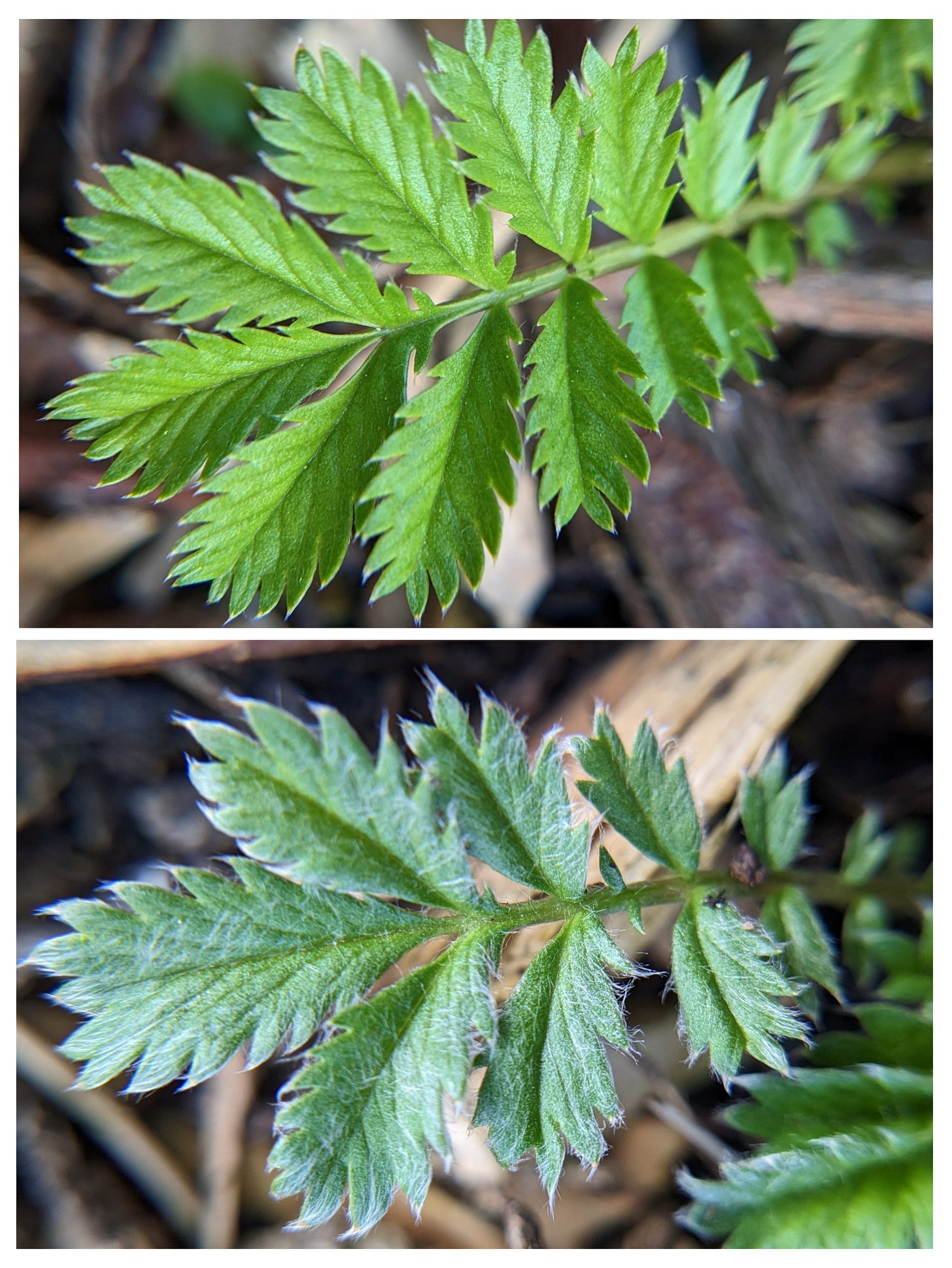For convenience, here is an index of my Silverweed related content.
Just a quick progress report this time.
In the autumn of last year, the specimens that I had obtained from all around the world from kind internet friends had produced seeds.
Do you know the feeling where your subconsciousness catches up with your everyday cognition? That is the feeling I had when I noticed these tiny seedling Silverweeds popping up in a deep plant pot.
These seedlings are actually the second generation of my breeding experiment, and I’m thrilled to be able to say this. These seeds are naturally or open-pollinated, so I don’t know their heritage. What I do know is that Silverweed is heavily self infertile, so I know that the genetics held within these seeds is very broad - after all, that’s why I initiated a global call for Silverweed in the first place.
If you recall, open-pollination was one of the low effort strategies from the beginning. Nevertheless, I have been observing these babies intently from the outset.
The classic white down on the leaf gives rise to the Silverweed’s namesake, but there is a single plant without it (glabrous). This particular seedling is greener and has more pronounced veins, as if someone has taken a very tiny razor and shaved the fine down off the leaf. The questions are naturally these:
Is this a mutation?
If it’s not a mutation, is it some rare recessive trait of Argentina anserina?
What are advantages and disadvantages of a hairless silverweed (greenweed!)?
Is this a not A. anserina at all but rather something from the Potentilla genus, or even Argentina pacifica?
A. pacifica looks very similar to A. anserina but without the silvery down.
What do you think? My money is on mutation, but that’s only because I like the chaotic nature it brings. For now, I will keep close observation and report back on any significant findings.





Congratulations on your babies! Just getting that far is great I think. I'm pretty sure I see variation in the amount of silver on our local silverweed too, so I suspect it is just a natural variation.
Unless you need to replicate the parentage of that particular seedling there isn't a lot to be gained from knowing how it came to be. Just keep it alive long enough to assess its utility and spread it around so you aren't likely to lose it, and keep on mixing up your genetics. Good work!